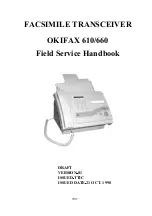
2
OWNER’S MANUAL
SAFETY
• Always follow label instructions for the chemical you are using.
• To avoid danger of fire or explosion, do not fog flammable liquids,
especially in an enclosed area.
• Wear a mask or respirator as required by the chemical being
applied. Fog particles can be practically invisible and are easily
inhaled.
• Do not fog so much that fog particles are drawn back into unit in
the intake air. Keep air filter in place.
THEORY OF OPERATION
Sentinel II fog heads use a powerful tangential blower to atomize feed liquid
in turbulent mixing nozzles. The fog head draws air through an intake port on
top of the unit. This allows the unit to be used in dirty hostle environments.
A pressure switch in the fog head controls its operation. When the switch
senses a pressure of at least 3 psi at the liquid feed inlet, it turns on the
blower and opens a solenoid valve allowing liquid to flow through a metering
valve and into the nozzle.
The Sentinel II 5700 head lets you adjust fog droplet size. At the fine end of
the range are droplets of 7-10 microns VMD (volume mean diameter). Such
droplets, which are practically invisible except under optimal lighting condi-
tions, form a light dry fog which floats a long time and diffuses widely.
The high end of the normal range is droplets of about 30 microns VMD. These
form a heavy mist which settles quickly to wet surfaces.
Fog heads operate best at a 5-15 psi liquid inlet pressure. This provides ample
liquid flow to nozzles yet allows good control by the metering valve. Higher
pressures make it harder to adjust droplet size and increase the chances of
impurities obstructing the metering valve.
If excess pressure is a problem, install an in-line pressure reducer in the liquid
line or a pressure controlled bypass loop at the liquid pump.
Pressure Control Techniques


























